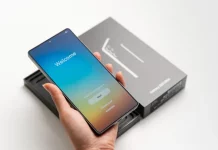The Android ecosystem is incredibly diverse, with each major brand offering a unique blend of hardware, software, and user experience. Based on recent user sentiment, professional reviews, and verified buyer feedback, here’s a breakdown of how these brands stack up in 2025, focusing on what users actually value most: hardware reliability, software cleanliness, update support, and customer service.
Motorola
Motorola is praised for its near-stock Android experience, solid battery life, and affordable mid-range options. However, its slow software updates are a major pain point, with many users accepting this trade-off for the clean interface and hardware quality.
Huawei
Huawei’s hardware, especially the Mate XT tri-fold, is innovative and well-built. However, the shift to HarmonyOS NEXT means no Android app compatibility, limiting its appeal outside China. Users who prioritize build quality and don’t rely on Western apps may still favor Huawei, but the lack of Google services and app support is a significant drawback.
Vivo
Vivo excels in camera technology and competitive pricing, but its Funtouch OS is criticized for bloatware, forced data collection, and poor resale value. While some users love the camera processing, others find the software experience frustrating and the hardware value drops quickly after launch.
Oppo
Oppo is strong in camera performance and offers flagship-level hardware, but Color OS is cluttered with pre-installed apps and bloatware. Update support is inconsistent, with flagship models getting better support than mid-range devices. Oppo’s reliance on third-party chips also makes it pricier than some competitors.
Sony
Sony caters to audiophiles and photography enthusiasts with high-end audio features and manual camera controls. However, its software support is limited (only two major Android updates for most models), and availability is poor in many regions. The premium price and short update cycle make it a niche choice.
Honor
Honor stands out for value, offering strong hardware and long battery life at mid-range prices. Its software support has improved dramatically, with flagship models now getting seven years of updates. However, limited availability and service centers outside major markets remain a concern.
Nothing
Nothing is known for its unique design and clean, bloat-free Nothing OS. The brand promises impressive update support (up to seven years for flagship models), but its service network is limited, and resale value is low due to its newer status.
Xiaomi
Xiaomi delivers flagship-level specs at mid-range prices, but MIUI is notorious for ads and bloatware. Update support is inconsistent by region, with Chinese users getting updates first. While some flagship models get up to four years of updates, most devices only get two.
OnePlus
OnePlus offers flagship performance and a clean, smooth Oxygen OS experience. Its update support matches Google and Samsung, with four major Android updates and five years of security patches for flagships. The brand’s value has decreased as prices have risen, but the software and hardware quality remain strong.
Google Pixel
Google Pixel provides the cleanest Android experience, fastest updates, and top-tier camera performance. The new Tensor G5 chip enhances AI features, and Pixel now offers seven years of updates. However, battery life is a common complaint, with some users reporting that the phone struggles to last a full day.
Samsung
Samsung leads in customer satisfaction, hardware quality, and service network. Its flagship devices get seven years of updates, and One UI offers deep customization and seamless ecosystem integration. The main downside is the high price, especially for flagship models, but Samsung remains the most comprehensive Android package available.
The rankings are based on a combination of global market share, user sentiment from forums like Reddit, professional reviews, and verified purchase ratings from major retailers. This approach captures real-world experiences beyond marketing claims, highlighting what users actually value in each brand.
Each brand excels in different areas, and the best choice depends on what matters most: software cleanliness, camera quality, battery life, or long-term support.





